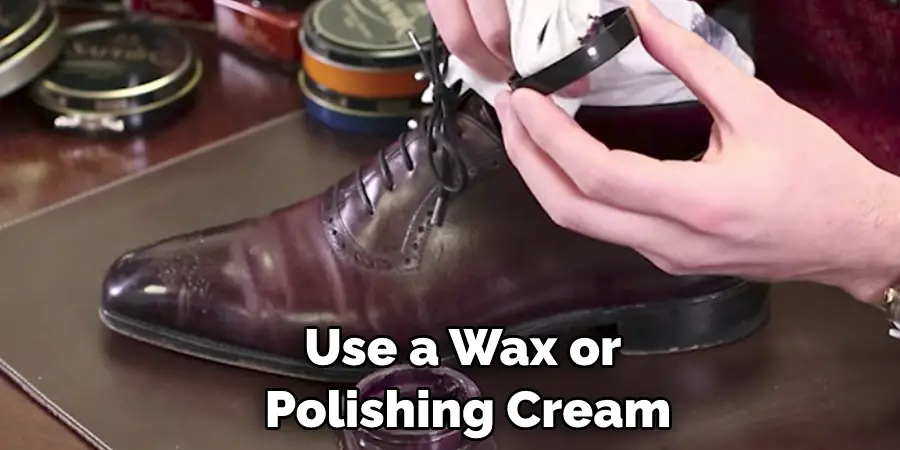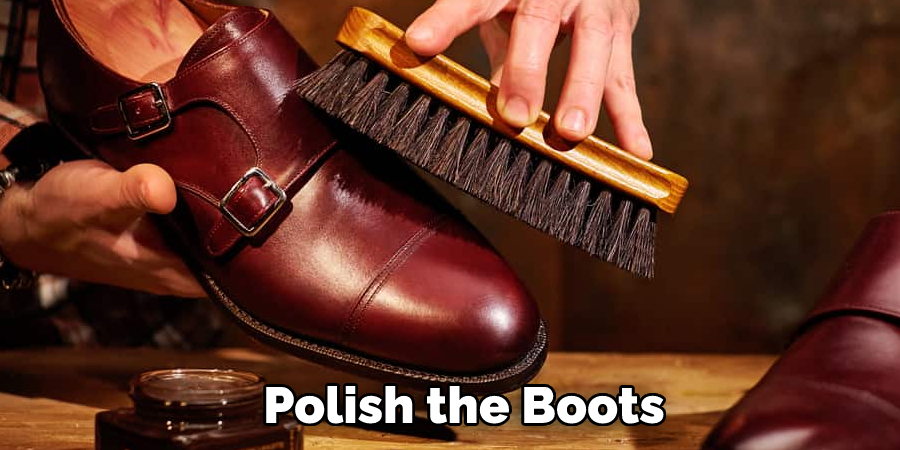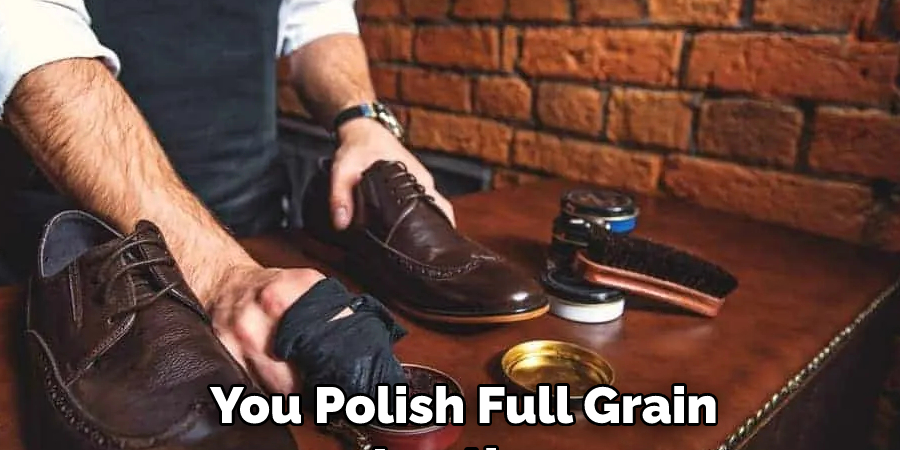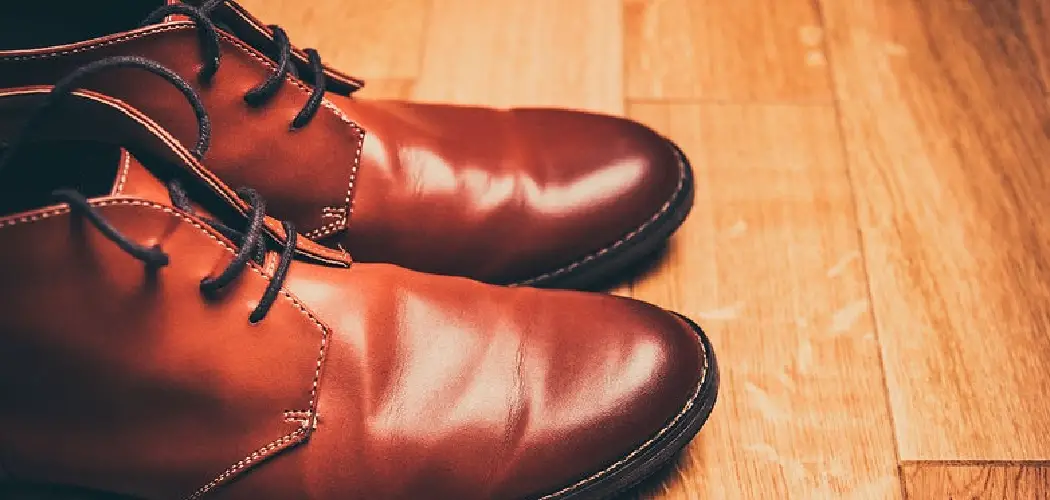Cleaning full-grain leather boots can seem daunting, but it’s a relatively easy task with the right approach. In this blog post, we’ll outline a step-by-step process for how to clean full grain leather boots and keep them looking their best.

We’ll also share some tips for protecting your boots from future dirt and wear. We’ve got you covered whether you’re dealing with dirt, mud, or salt stains. Keep reading for tips on how to care for your full-grain leather boots!
10 Effective Ways on How to Clean Full Grain Leather Boots
1. Start by Removing Any Dirt, Mud, or Debris:
Use a soft brush to remove any dirt, mud, or debris from the surface of your boots. If you don’t have a brush handy, use a clean cloth. Ensure you’re not using anything too abrasive as you don’t want to damage the leather. If your boots are especially dirty, you can pre-treat them with a leather cleaner before brushing.
2. Wipe Down the Boots with a Damp Cloth:
Once you’ve removed any surface dirt, it’s time to wipe down the boots with a damp cloth. This will help remove any remaining dirt and debris and any excess cleaner from pre-treating the boots. If you don’t have any leather cleaner handy, you can use a mild soap and water solution.
3. Apply a Leather Conditioner:
After you’ve cleaned the boots, it’s important to apply a leather conditioner. This will help keep the leather hydrated and prevent it from cracking or becoming brittle over time. If you don’t have any leather conditioner on hand, you can make your own by mixing one part olive oil with one part vinegar.
4. Let the Boots Dry:
Once you’ve applied the leather conditioner, let the boots dry in a cool, well-ventilated area. Please do not put them in direct sunlight, as this can damage the leather. If you have any fans handy, you can point them toward the boots to speed up the drying process.

5. Use a Wax or Polishing Cream:
After the boots are dry, you can use a wax or polishing cream to help protect them from future dirt and wear. This step is optional, but it’s a good idea to keep your boots looking their best. Apply a small amount of wax or cream to a clean cloth and rub it into the leather in circular motions.
6. Buff the Boots:
After you’ve applied the wax or polishing cream, buff the boots with a clean cloth to remove any excess and help the product penetrate the leather. You can use a brush designed for buffing leather, but be sure to use a soft one so you don’t damage the surface.
7. Polish the Boots:
After the boots have dried, you can polish them to give them a nice shine. You can use either a liquid polish or a wax-based polish. If you’re using a liquid polish, apply it with a soft cloth and then buff it off with another soft cloth.
If you’re using a wax-based polish, apply it with a soft cloth and then buff it off with a horsehair brush. Either way, you’ll want to ensure that you don’t get any polish on the leather sole of the boot since this can make it slippery.

8. Apply Water and Stain Repellent:
After your boots are dry, you can apply water and stain repellent. This will help protect the leather from future stains and wear. If you don’t have any water and stain repellent on hand, you can make your own by mixing one part white vinegar with two parts water. Then, apply the mixture to your boots with a clean cloth and let it dry. You can also use saddle soap or mink oil to waterproof and condition your boots.
9. Treat Salt Stains ASAP:
If your boots are salt-stained, it’s important to treat them as soon as possible. Salt can damage the leather if it’s left on for too long. To remove salt stains, mix one part water with one part vinegar and apply it to the stain with a clean cloth. Then, rub the cloth in a circular motion until the salt is lifted from the surface of the leather.
Once you’ve removed the salt, wipe the area clean with a damp cloth and allow the boots to air dry. Treating salt stains quickly can help prevent long-term damage to your leather boots. However, if the salt has been on the leather for a while, it may be difficult to remove.
10. Store Your Boots Properly:
When not wearing your boots, it’s important to store them properly. This will help prolong their life and keep them looking their best. Store your boots in a cool, dry place away from direct sunlight. You can also stuff them with newspaper to help absorb moisture and keep their shape. If you’re storing your boots for an extended period, consider using a shoe tree.

This will help keep the leather from creasing and cracking. When you’re ready to wear your boots again, ensure they’re clean and dry before putting them on. If they’re wet, stuff them with newspaper and let them air dry before wearing. Never put wet boots on, as this can damage the leather.
Some Helpful Tips and Suggestions
Here we have given some tips on how to clean full grain leather boots.
- Start by removing any dirt or debris from the surface of the boots with a soft, dry cloth.
- If there are any stubborn stains, gently rub them with a damp cloth.
- Make sure to avoid using any harsh chemicals or cleaners on the leather.
- Once you’ve removed all the surface dirt and stains, you can condition the leather to help keep it soft and supple.
- When you’re finished, buff the boots with a soft, dry cloth to restore their shine.
- If you want to waterproof your boots, you can apply a leather protector after you’ve cleaned and conditioned them.
- Always store your leather boots in a cool, dry place when they’re not being worn.
With just a little care, you can keep your full grain leather boots looking their best for years to come!
Should You Polish Full Grain Leather?
Full grain leather is the highest quality of leather available. It’s made from the top layer of the hide, which has been left intact. This gives it a natural look and feels that can’t be replicated with other types of leather. Full grain leather is also more durable than other types of leather, making it ideal for use in products like boots and shoes.

If you have a pair of full-grain leather boots, you may be wondering if you should polish them. The short answer is yes, and you should polish your boots to help protect the leather and keep them looking their best. In addition, if your boots are made from full-grain leather, they’re likely to be more expensive than boots made from other types of leather. So you’ll want to take care of them so they last longer.
How Often Should You Clean Full Grain Leather Boots?
Ideally, it would help if you cleaned your full grain leather boots every few months. This will help to keep them looking their best and prevent any dirt or grime from building up and causing permanent damage. You can use a few methods when cleaning full grain leather boots. One popular method is to wipe them down with a damp cloth. This will help to remove any surface dirt or grime that may have built up over time.
Another option is to use a mild soap and water solution to clean the boots gently. Be sure to rinse the soap off completely afterward and dry the boots with a soft cloth. Avoid harsh chemicals or cleaners on full grain leather boots as this can damage the material. Once you have cleaned your full grain leather boots, it is important to condition them regularly. This will help to keep the material supple and prevent it from drying out and cracking over time.
Frequently Asked Questions
Is Full Grain Leather Easy to Clean?
The cleaning process for full grain leather will vary depending on the type and quality of the leather. However, generally speaking, full grain leather is relatively easy to clean and maintain, as most spills and messes can be wiped clean with a damp cloth. If the leather becomes dirty or smelly, then a more intensive cleaning process may be necessary.
Does Vaseline Help Restore Leather?
Yes, Vaseline can help restore leather. It is a petroleum jelly that is used to treat dry skin and is often used as a lubricant or moisturizer. Vaseline can help reduce the amount of water lost from the skin and can help to protect the skin from moisture loss. This can help to keep the leather in good condition and reduce the need for additional treatments.
What Oil is Best for Leather Boots?
Different oils will work better on different types of leather. However, a general guideline is to use an oil that is designed specifically for leather; this will help ensure a lasting and quality finish. Some oils that are commonly used for leather boots include jojoba, shea butter, or mineral oil. It is important to test the oil on a small section of the boot first to make sure it will work well before applying it to the entire boot. Once the oil is applied, it is important to wait several hours before putting the boots on so that the oil can fully dry.
Can Full Grain Leather Get Wet?
Yes, Full Grain Leather can get wet. However, it is important to take precautions to protect the leather from water damage. To minimize water damage, always keep your leather dry by storing it in a dry location and avoiding contact with water or other liquids. If you do accidentally get your leather wet, immediately remove any water droplets from the surface with a clean cloth or paper towel, and let the leather dry completely before using it. Always avoid exposure to direct sunlight while the leather is wet, as this can cause the leather to fade prematurely.
Conclusion
Cleaning full grain leather boots is a process that takes time and patience. However, following the simple steps provided will help to keep your boots looking their best for years to come. First, clean your full grain leather boots by brushing them with a horsehair brush. This will remove any surface dirt or dust and help keep the leather soft. If your boots are wet, allow them to air dry before brushing.
Please do not put them in the sun or near a heat source as this could damage the leather. Instead, apply a quality leather conditioner to your boots every few months to keep them looking their best. We hope this guide on how to clean full grain leather boots has been helpful. Have you tried cleaning your full grain leather boots this way? What tips do you have to share? Let us know in the comments below!

